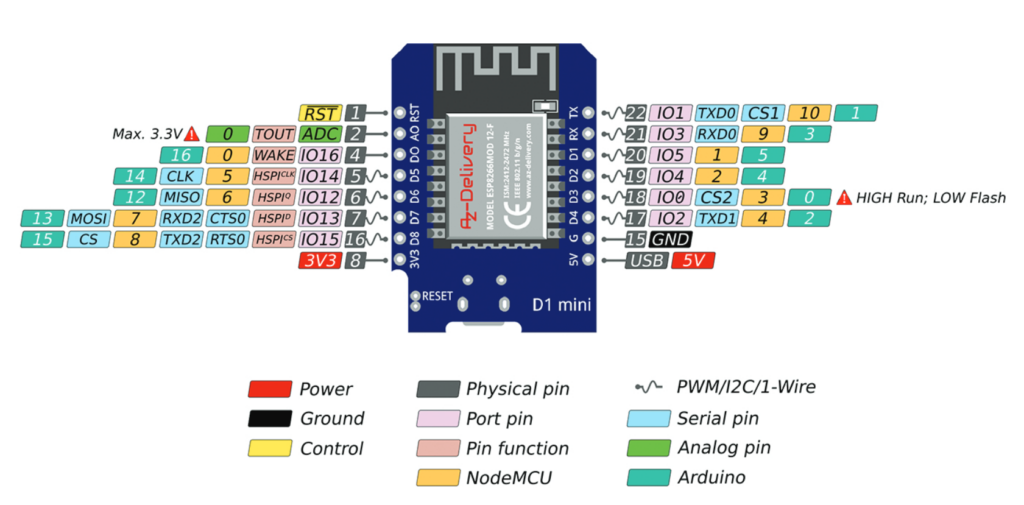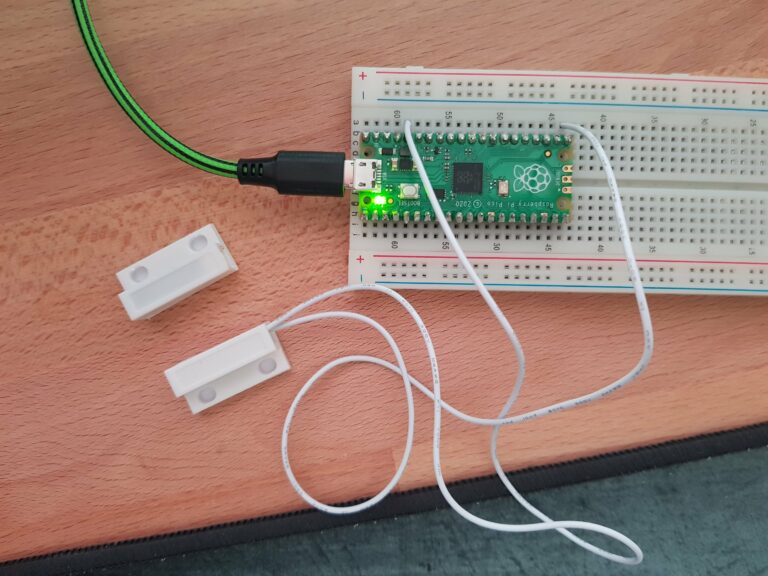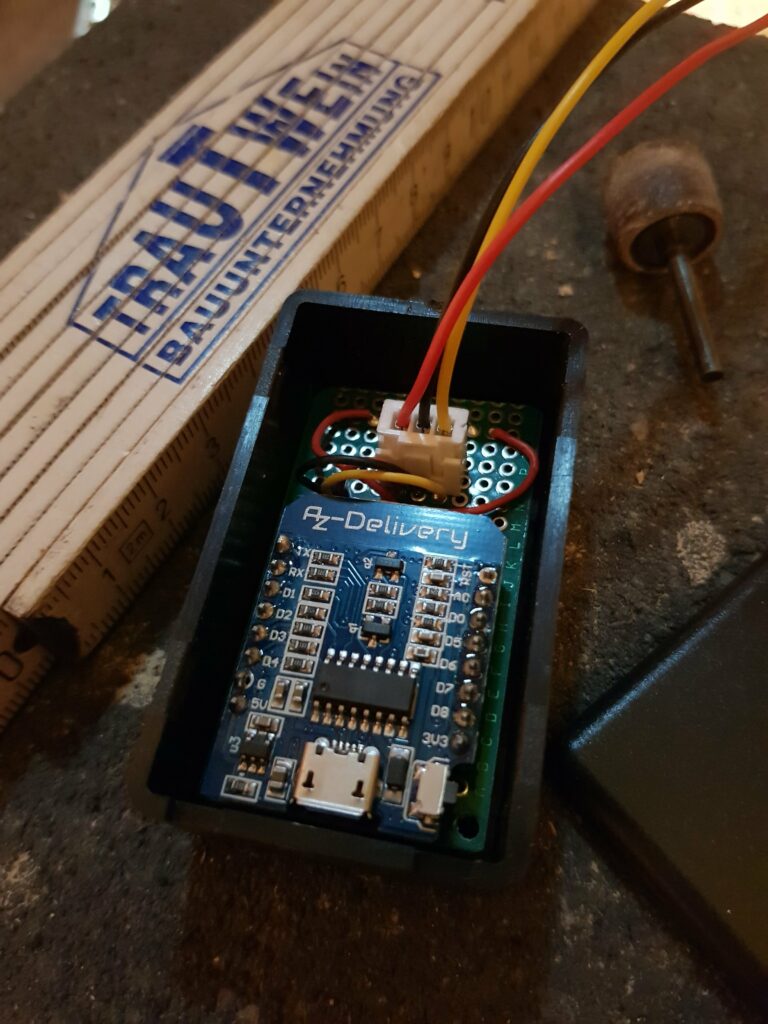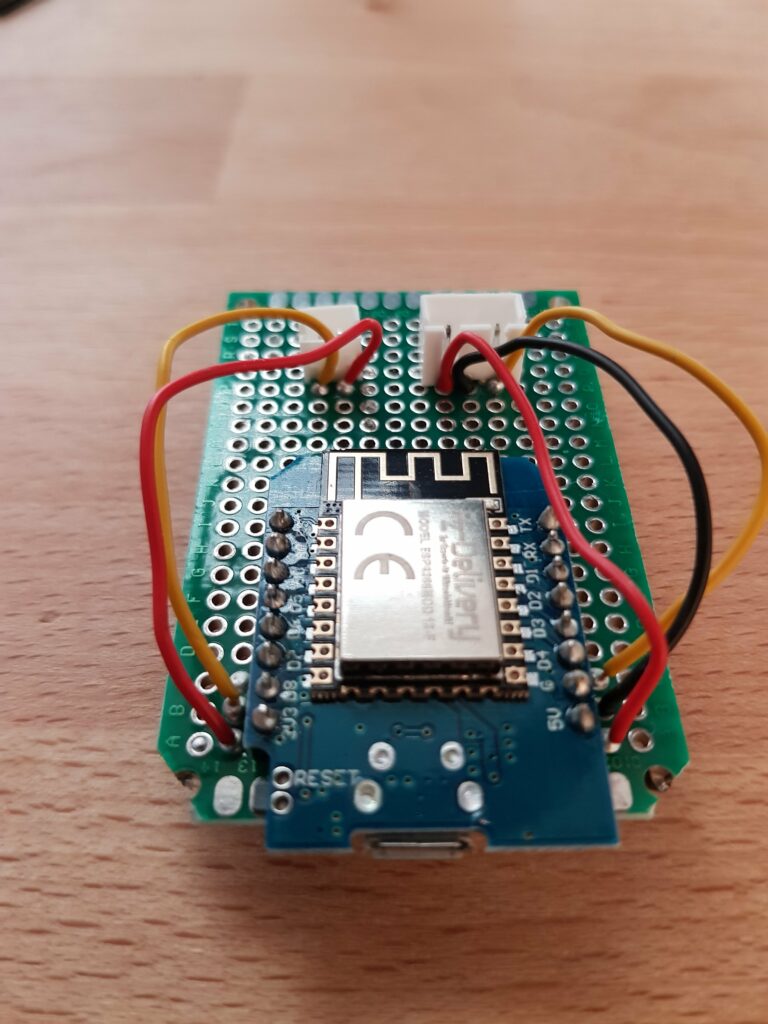Say hello to my little friend – D1 mini pinout

Thank you AZ-Delivery for this pinout! And thanks for best prices for this. They have got some really good offers here: https://amzn.eu/d/2ZqjALZ (no affiliate link)
The onboard LED is at GPIO 2.


Thank you AZ-Delivery for this pinout! And thanks for best prices for this. They have got some really good offers here: https://amzn.eu/d/2ZqjALZ (no affiliate link)
The onboard LED is at GPIO 2.

As I really prefer Python for my little projects over C++, I flashed my Wemos boards with Micropython and wanted to share how I did it (it was pretty easy). You have to connect your board with USB to your computer, have Thonny installed and the desired micropython image downloaded. (You can do it with…

Jump to: Pico – D1 mini – Pi Zero Raspberry Pico A short Python implementation of a magnetic switch turning on a LED when it is not connected (e.g. window is opened). For simplicity reasons I used the builtin LED on the Pico. You have to use the pull=Pin.PULL_DOWN parameter for the input pin (sensor)….

The pinout of Pi Pico and Pico W are the same. Just the onboard LED has changed. See below.

This is a continuation of Is it dark yet ? – Measuring brightness with LDR on Pi Pico (W) and ESP8266 (D1 Mini & NodeMCU v3) in MicroPython, but concentrating on a fast and clean code rather than how to use a LDR with MicroControllers in principle. What you need: D1 mini or a similar…

TLDR: An IoT sensor for temperature and humidity sending its values to a local MQTT server. Measuring interval and thresholding easy to configure. So much to write about a pretty small device and less than 100 lines of code including configuration, prints and comments. Hope you enjoy it! 🙂 I really like building and writing…

It measures the temperature, humidity and open status of a window and send the values to the local MQTT broker if the values have changed (enough). The D1 got a nice housing on a solderable breadboard. The sensor cables can be plugged and unplugged into sockets on the breadboard. So I can easily exchange the…